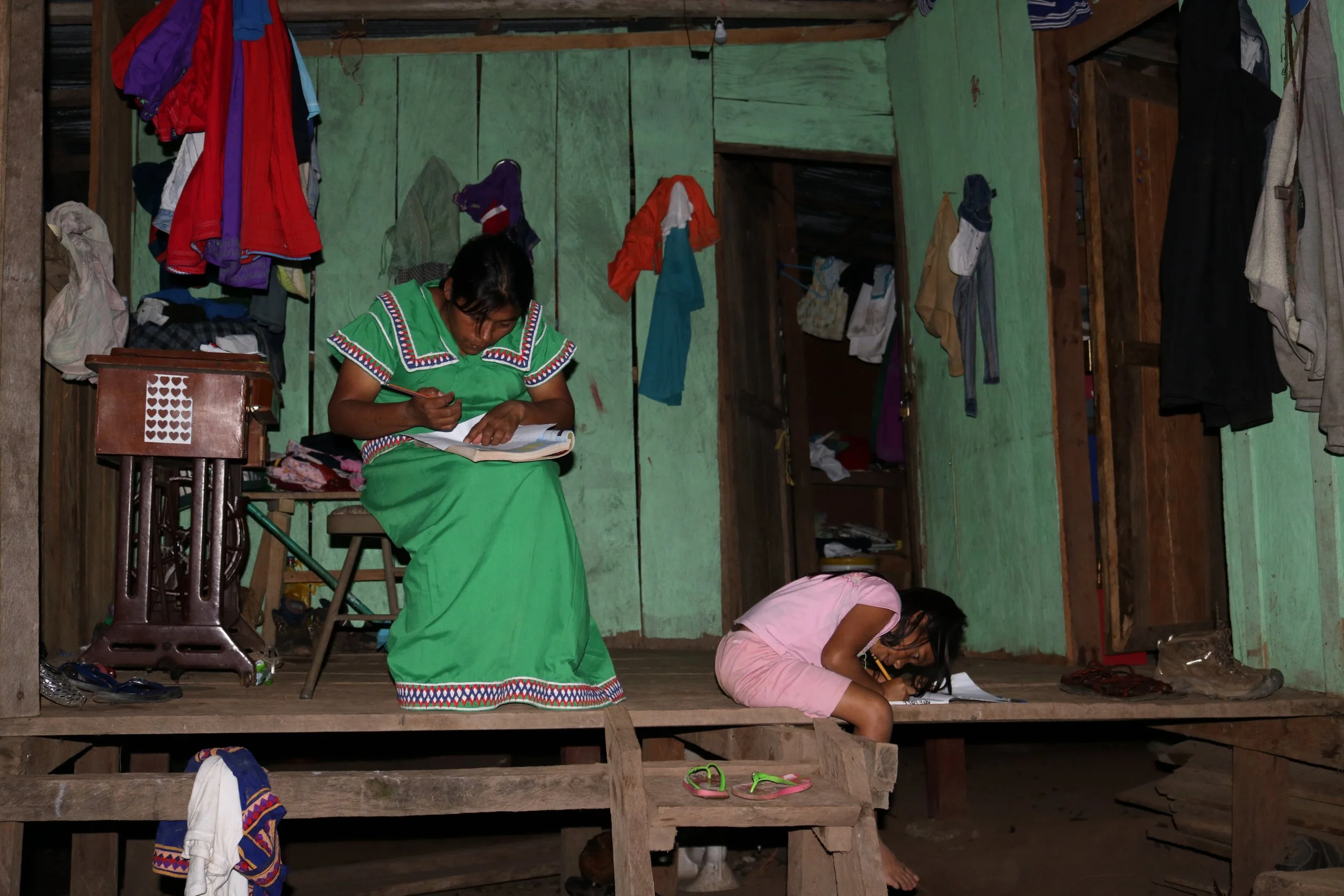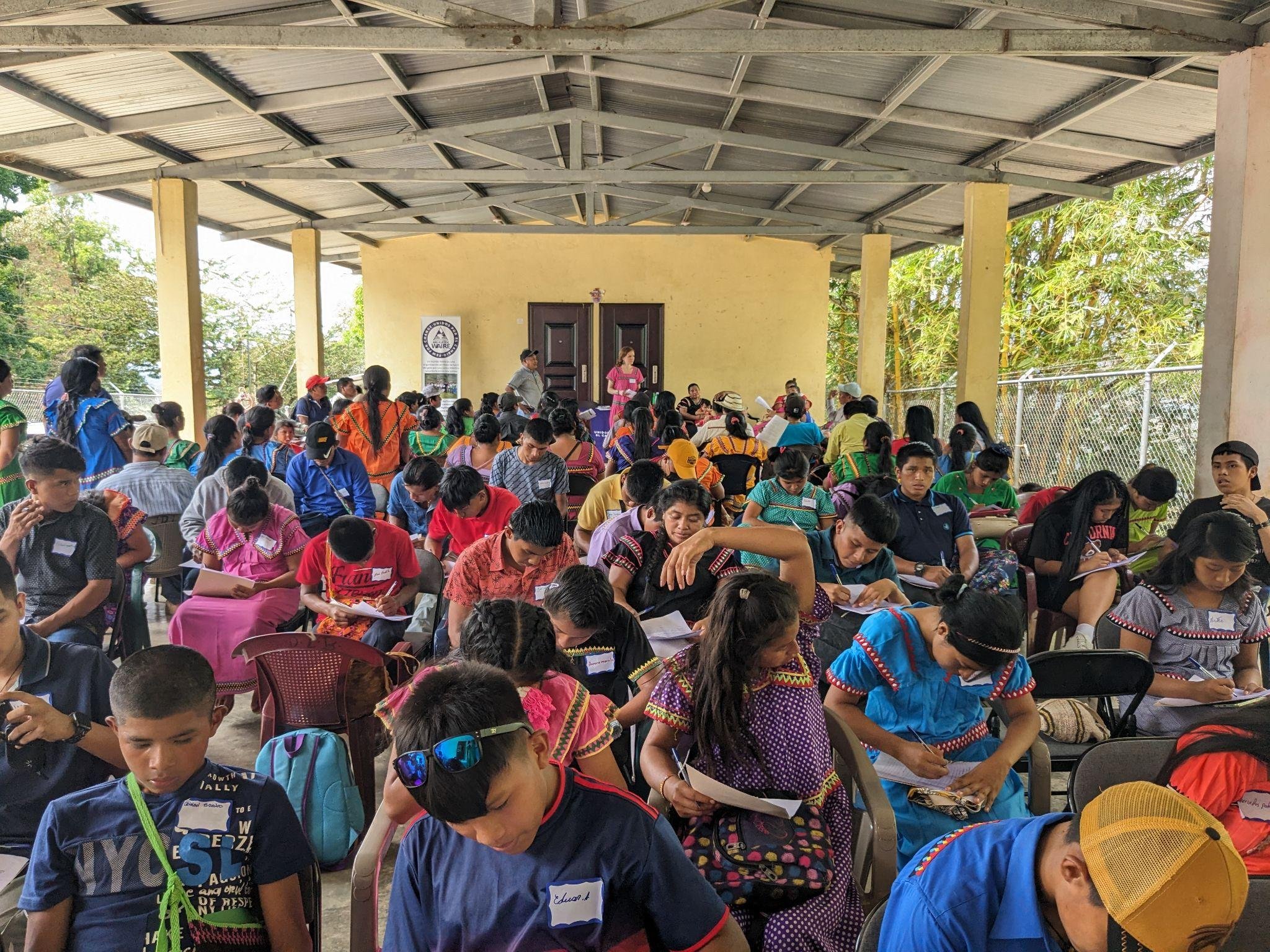In the continuing story of the controversial Barro Blanco hydroelectric dam, a recent development on the human rights front provides a glimmer of hope to people protesting a project that is already reportedly more than half complete. A project 15 years in the making, the Barro Blanco hydroelectric dam has been controversial from the start. The project would turn the Tabasara River, which flows through the autonomous indigenous region of the Ngäbe-Buglé people, into a 6.7 hectare stagnant lake ecosystem. While the dam itself is outside the Comarca (semi-autonomous indigenous region), the flooded area would consume a small village, destroy traditional fishing grounds, and submerge culturally significant petroglyphs. Genisa, the energy company undertaking the project, published an Environmental Impact Statement of questionable integrity that ignored rare frog habitat, and did not properly consult with the community that would be impacted by the flooding associated with the dam (4). With the numerous environmental and cultural effects of the Barro Blanco project, it is these human rights violations that have garnered the most international attention, and may finally be impacting the project’s progress.
On February 20 of 2014, several environmental and human rights organizations submitted an urgent appeal to the United Nations’ Special Rapporteurs, requesting that they ask the Panamanian government to suspend eviction of the impacted community, and halt the construction of the dam, until Genisa complies with international human rights obligations. They also urged a cessation of funding by the European and Central American development banks that have been supporting the project, until they compensate the impacted communities and take action to prevent further rights violations (7).
The Cacica (chief) Silvia Carrera, an indigenous Ngäbe leader and vocal opponent against the dam, presented a case to Panama’s Supreme Court of Justice on April 14. Her case argued that Law 18, which was passed in March of 2013 to allow appropriation of Ngobe lands, violated Article 127 of the Panamanian Constitution, which protects collectively owned lands and prevents ownership of indigenous lands by private interests. Unfortunately, the Court rejected the claim (9).
Meanwhile, Ngäbe protesters had set up camp along the banks of the Tabasará River to show their disapproval of the project. On April 25, after months of peaceful protest, up to 200 riot police descended on the camps to remove protesters from the site. Though they claimed to only have used tear gas, 7 activists were injured including Jose Carpintero, who was apparently shot in the face with rubber bullets. This forced removal of the protesters had been anticipated after the Cacica’s Supreme Court loss the previous week (1).
Then, on May 5, a complaint was filed against FMO, a Dutch development bank that is a main funder of the project. Similar to the appeal filed on February 20th, the complaint criticizes FMO for failing to obtain free and prior informed consent of the Ngäbe people affected by the dam, a right which is protected by the UN Declaration on the Rights of Indigenous People, before it provided $25 million in funding to Genisa. The complaint was filed by the Ngäbe organization Movimiento 10 de Abril (M-10), which was formed in 1999 and has been the leader of organized opposition to the dam. Their complaint also states that FMO violated its own policies by deciding to fund Genisa when they knew that the Ngäbe were not adequately consulted for the project’s Environmental Impact Statement (6).
The complaint is currently being reviewed by FMO’s own Independent Complaint Mechanism, which was formed to provide people impacted by FMO’s investments an opportunity to voice their concerns and have an independent group review their case and resolve disputes. On June 13, the ICM determined that the complaint filed by M-10 meets admissibility criteria and will move on to the next phase. The ICM will work with both parties, reviewing documents and either initiating dialogue or conducting an investigation. The panel will then write a report with recommendations, the whole process taking months. The hope of M-10 is that FMO withdraws funding for the Barro Blanco Dam, as its completion looms ever nearer (5). The first of its kind for development banks, the Independent Complaint Mechanism was formed by the FMO this January, and the Barro Blanco dam project is the first case it has reviewed. We will continue to provide coverage as the case continues, so please check back soon for updates.
The case of the Barro Blanco dam project highlights the inequities faced by the Ngäbe people in Panama. Centuries after their first contact with Spanish explorers, their traditional lands are still being taken and exploited without their consent. This marginalization continues into other aspects of the sociopolitical realm as well, with Ngäbe families having limited access to medical services, education, and well-paying jobs.
The Ngäbe are proud, strong, people who are too often denied the tools they need to succeed. This is why Few for Change supports Ngäbe children by providing scholarships to motivated youth. Many of our students dream of becoming doctors, environmentalists, or engineers, and returning to help and work in the communities where they grew up. While the fate of Barro Blanco is in the hands of multinational organizations, you have the power to make a difference now. Donate today and you can make a positive impact, brightening the future for at least one Ngäbe child.
Sources:
1. Arghiris, Richard. “Panama police attack Ngäbe anti-dam protest camps.” Climate Connections. April 27, 2014. http://climate-connections.org/2014/04/28/panama-police-attack-ngabe-anti-dam-protest-camps/#more-33099
2. “Complaint filed against Dutch development bank FMO for funding the Barro Blanco dam in Panama.” Human Rights & Grievance Mechanisms. http://grievancemechanisms.org/news/complaint-filed-against-dutch-development-bank-fmo-for-funding-the-barro-blanco-dam-in-panama
3. “Declaración del Relator Especial sobre los derechos de los pueblos indígenas al concluir su visita oficial a Panamá.” The University of Arizona Support Project for the United Nations Special Rapporteur on Indigenous People. July 26, 2013. http://unsr.jamesanaya.org/statements/declaracion-del-relator-especial-sobre-los-derechos-de-los-pueblos-indigenas-al-concluir-su-visita-oficial-a-panama
4. “Dodgy Deal: Barro Blanco dam project.” Bank Track. June 19, 2014. http://www.banktrack.org/manage/ajax/ems_dodgydeals/createPDF/barro_blanco_dam_project
5. “First complaint to Dutch development bank FMO admitted.” Human Rights & Grievance Mechanisms. June 13, 2014. http://grievancemechanisms.org/news/first-complaint-to-dutch-development-bank-fmo-admitted
6. “FMO investigates complaint about Barro Blanco Dam, Panama.” Both Ends. June 16, 2014. http://www.bothends.org/en/News/newsitem/364/FMO-investigates-complaint-about-Barro-Blanco-dam,-Panama
7. “Groups appeal to UN to halt imminent forced evictions of indigenous Ngobe families.” Earthjustice. February 20, 2014. http://earthjustice.org/news/press/2014/groups-appeal-to-un-to-halt-imminent-forced-evictions-of-indigenous-ng-be-families
8. “Ngäbe-Buglé challenge constitutionality of land seizures in Panama.” Earth News Online. April 14, 2014. http://www.earthnewsonline.org/ngabe-bugle-challenge-constitutionality-of-land-seizures-in-panama/
9. Rubinson, Abby. “Urgency grows in Panama as dam building continues.” Earthjustice. April 4, 2014.
http://earthjustice.org/blog/2014-april/urgency-grows-in-panama-as-dam-building-continues
10. Photos, in order of appearance:
http://en.mujerindigena.com/wp-content/uploads/2013/11/barro-blanco.jpg
http://www.bananamarepublic.com/wp-content/uploads/nobarroblanco.jpg

















